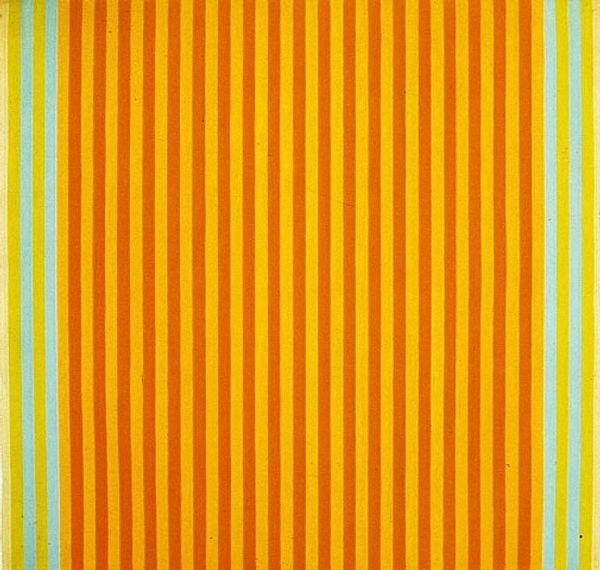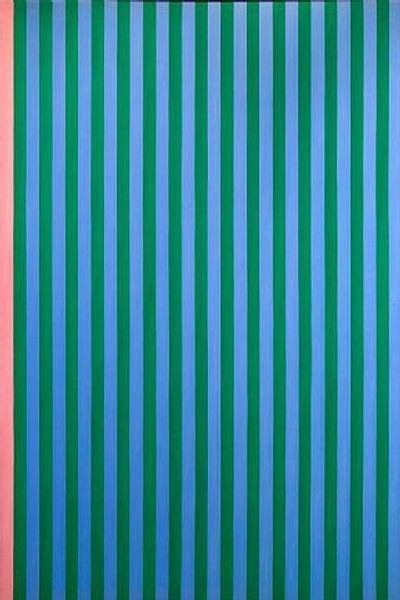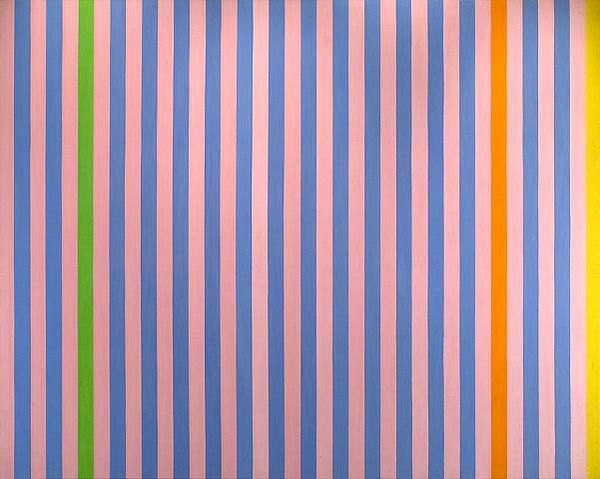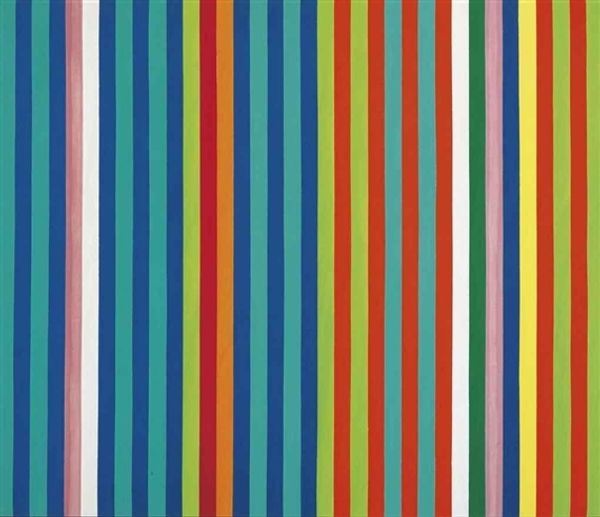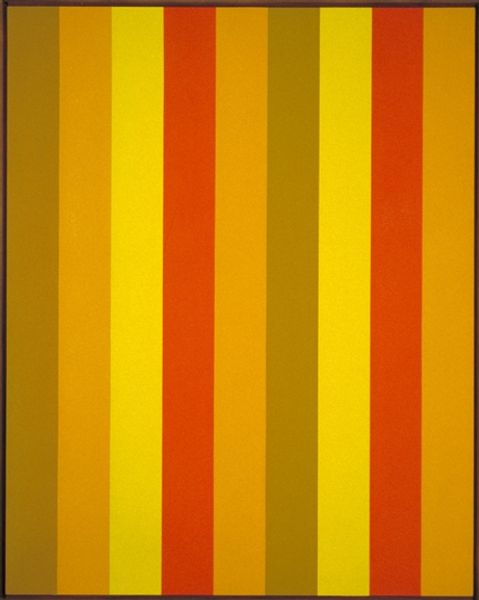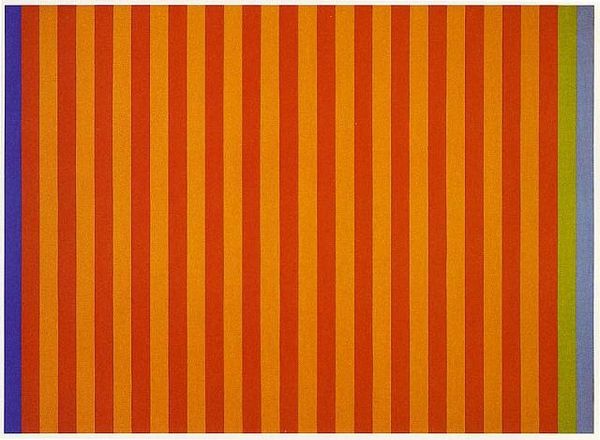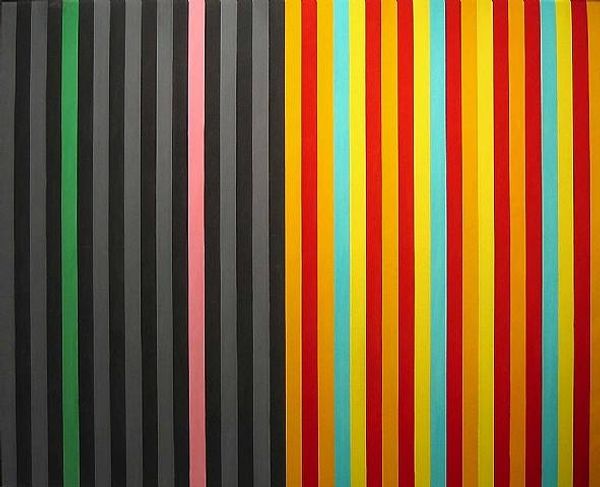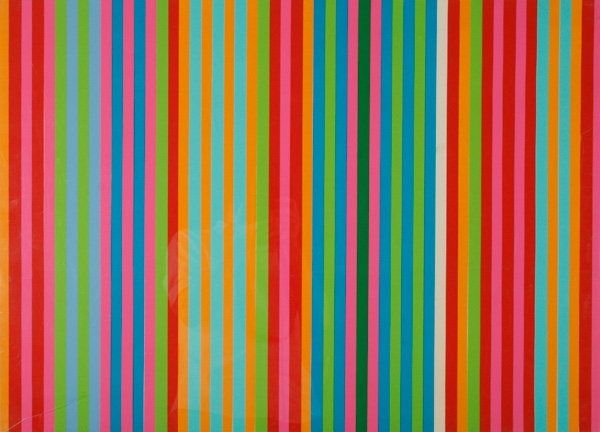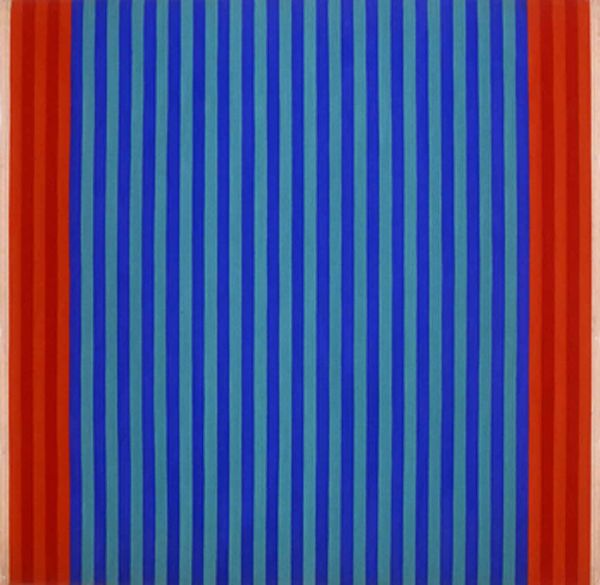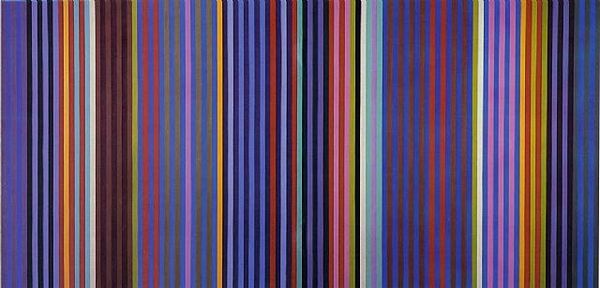
#
natural stone pattern
#
pattern
#
geometric pattern
#
abstract pattern
#
minimal pattern
#
organic pattern
#
repetition of pattern
#
vertical pattern
#
line
#
pattern repetition
#
layered pattern
#
combined pattern
#
orange
Dimensions: 246.38 x 388.62 cm
Copyright: Gene Davis,Fair Use
Editor: We’re looking at Gene Davis's "Tom's Furnace," created in 1961. The painting presents alternating vertical stripes of orange and blue. I find its boldness kind of striking, like a flag or a simple design for a building. What's your interpretation of this work? Curator: The vibrant stripes of "Tom's Furnace" exist in dialogue with a specific moment in art history. Consider the context: it's 1961, Abstract Expressionism's emotional intensity is waning. Artists like Davis were searching for new visual languages. These bold, simple lines rejected the messy, individualistic gestures of the previous generation. How might this have resonated with the public at the time? Editor: So, it's almost a reaction *against* the established art world? Curator: Precisely! The work operates within the public sphere as a challenge to expectations about what painting could be. By embracing hard-edge abstraction, artists were trying to create work divorced from traditional art hierarchies. "Tom's Furnace", by being so obviously not about furnaces, reclaims the right for a painting to be, and mean, precisely and only what it represents visually. What are your thoughts on this in connection to how the piece might have been received? Editor: That makes so much sense! I hadn’t really considered how the historical moment shaped such a simple composition. It's not *just* stripes. Curator: Exactly. Davis’s work exists within, and responds to, socio-cultural and art historical currents, subtly transforming the dialogue around art’s very function. The piece reflects how artists push boundaries and redefined visual vocabularies. Editor: I’m beginning to see how artworks carry so much meaning, far beyond just aesthetic appeal. This really sheds a different light on abstract art. Curator: Absolutely. Context truly alters how we receive, read and even see what’s in front of us!
Comments
No comments
Be the first to comment and join the conversation on the ultimate creative platform.
